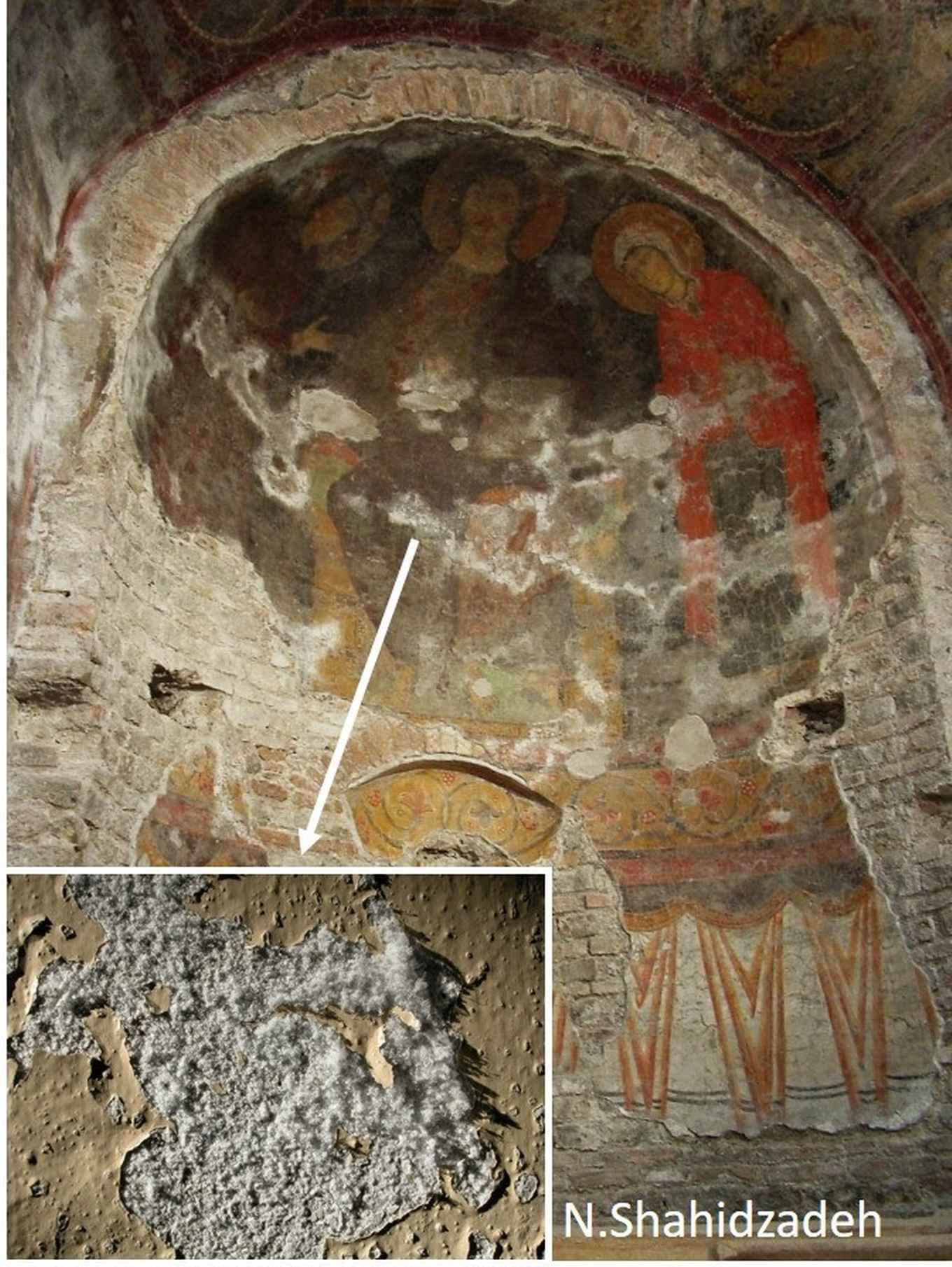Physics protecting art
22 September 2020

One of the major threats for art works made of porous materials – think of murals, pottery and natural stone – is the effect of soluble salts that have penetrated the pores. Under the influence of fluctuations in temperature and humidity, these salts absorb moisture from the air and dissolve. They can then crystallize again when the material dries up. Such crystallization can cause permanent damage to the material’s internal structure.
Physics research can contribute significantly to the prevention of such damage and to the preservation of our cultural heritage. The Crystinart programme (CRYStallization damage at the INTerfaces of ARTworks) was established with this goal in mind, on the initiative of UvA physicist Prof. Noushine Shahidzadeh. Besides the UvA Institute of Physics, the TU Eindhoven, the universities of Bologna (Italy) and Pau (Frankrijk) and the restoration workshop for Ceramics, Glass and Stone of the Rijksmuseum are involved in the project.
Within this cooperation between exact scientists and conservation specialists, fundamental research will be done on the topic of crystallization as one of the major causes of degradation of porous objects – and art in particular. The project is financed by the Joint Programming Initiative on Cultural Heritage and Global Change (JPICH), the Netherlands Organisation for Scientific Research (NWO) and the Netherlands Institute for Conservation Art and Science (NICAS).